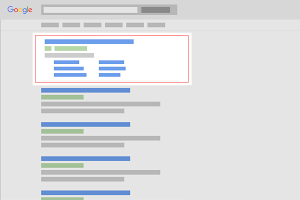Share This Article
Displaying advertising in search engines is just one of the actions you can do with Google Ads. In this post we’ll teach you the keys to this type of campaign.
Google Ads is a service that allows you to create and manage advertising campaigns on the internet. Although this kind of campaign is commonly associated with ads displayed in a Google search, there is a wide variety of ad types and a whole network of locations where your campaigns could be displayed.
The term “search ads” is used to refer exclusively to the campaigns and advertisements configured to activate in Google searches and/or other web portals that use the same algorithms and offer similar search services. In this post we’ll cover the factors to be taken into account when setting up search engine advertising, leaving aside the other kinds of ads or campaigns that can be created through Google Ads.

Setting up campaigns
To launch a campaign, the first thing to do is pay attention to the configuration from the moment you start work on it. The first step is to select the campaign type. In this case you will have to choose the “search network only” option or “search with display selection”. The difference between these two is that while the first only allows advertising in search engines, the second makes it possible to combine that type of ad with the display network version.
The next step is to choose whether you will include what Google calls “search network partners” as locations for your ads. These partners are websites with search services that use a similar algorithm to that provided by Google and that are able to display ads. Examples of such pages are Ask.com and URAOL.com.
Keyword Matching
Keywords are those that are available for bidding and which will activate our ads when they are searched for. Matching refers to the desired degree of accuracy, which determines whether searches will activate the ads or not. For example, if we set the keyword as “buy perfumes”, we would also ask whether or not we want our ads to be displayed when synonyms such as “buy colognes” or “get perfumes” are searched for. Do we also want them to be displayed when the word order is altered and “perfumes to buy” is searched for? Do we want to include variants of singular and plural? Defining all this will specify the type of matching.
Matching types:
- Wide matching: this is assigned by default. When a word has broad matching, it is activated whenever one looks for similar phrases that include the keyword or synonyms of it. For example, if we have the keyword “perfume” ads will be displayed whenever “buy perfume”, “cologne” or “perfume brands” are searched for. It is important to note that using broad matching will result in everything being shown (the keyword “Seat Ibiza” would also generate results for the island of Ibiza, for example).
- Wide Modified Concordance: to activate it, a “+” must be added at the beginning of each keyword. When you select this type of matching, your keywords will activate the ads when searches are carried out that contain the keyword in question (not synonyms) or slight variations of it (singular, plural, etc) regardless of the order in which they were searched for. For example a keyword with modified broad matching could be + buy + perfumes. This would activate the ads when looking for terms like “buy perfumes”, “buy perfume online”, or “perfumes to buy on the internet.”
- Phrase matching: to activate this you must enter the keyword between quotation marks: “keyword”. This modification activates the ads when the user’s search includes the indicated keyword with the same word order. Following the above example, the keyword “buy perfumes” would activate the ads when searching for terms such as “buy perfumes online” or “perfume store.”
- Exact match: to activate this you must enter the keyword in brackets: [keyword]. This type of matching causes ads to be displayed only when you search specifically for the terms in brackets in the same order or with slight variations such as typographical errors or spelling mistakes. For example, the keyword [beauty products] would activate advertisements when searching for terms such as “beauty products”, “beauty products”, or “beauty products”.
We would determine concordances based on the user behaviour, our budget and the strategy we are using .
Negative keywords
By setting negative keywords we avoid displaying ads when terms are searched for that, even if they include the keywords we have specified, may not be of interest with regard to what we are offering. For example, if you have a dropshipping store for fashion accessories, one of the words you could bid on is “buy watches online”. However, negative keywords such as “wall” or “glass” should be set to prevent ads from being displayed when someone looks for terms like “buy wall clocks online” or “buy hourglasses online”.
Ad Extensions
Of the ads displayed by search engines we can identify several types. This is because if the search algorithm considers that your ad is sufficiently relevant to the user’s search, it will automatically provide more information to the bottom of the ad, as previously covered. This “extra” information that sometimes appears next to the ads is called “ad extensions”.
To create them, you must go to the appropriate section of Google Ads. Extensions can be of various kinds and depending on the user’s search, Google will show one type or another or will simply not show any, which would be the most simple type of advert.
There are extensions that are automatically added to your advert. Google extracts them from the information on your own website and embeds them in the ads to offer added value to the users you are looking for. However, many other extensions will need to be added to the campaigns manually. The most common are:
- Call extensions — adds the company phone number next to the ad.
- Location Extensions: adds the location of the physical store or contact address of the company that manages the ad.
- Site Links: adds direct hyperlinks to other related sections within the domain being advertised.
- Featured texts: allows you to highlight text in the advertisement which is extracted directly from the website itself.
Including extensions for ads has been shown to greatly increase the chances that a user will click on the ad. We therefore recommend working with these extensions effectively and activating those that are most beneficial to your business.
If you are going to set up a campaign in the Google search engine network using Google Ads, these are the most important factors that you will have to take into account. Don’t forget that in addition to these actions, there are other types of campaigns that can contribute to boosting the volume of business in your dropshipping store. If you want to know more about this, we will teach you how to configure and implement them in other posts.





 Contact
Contact





